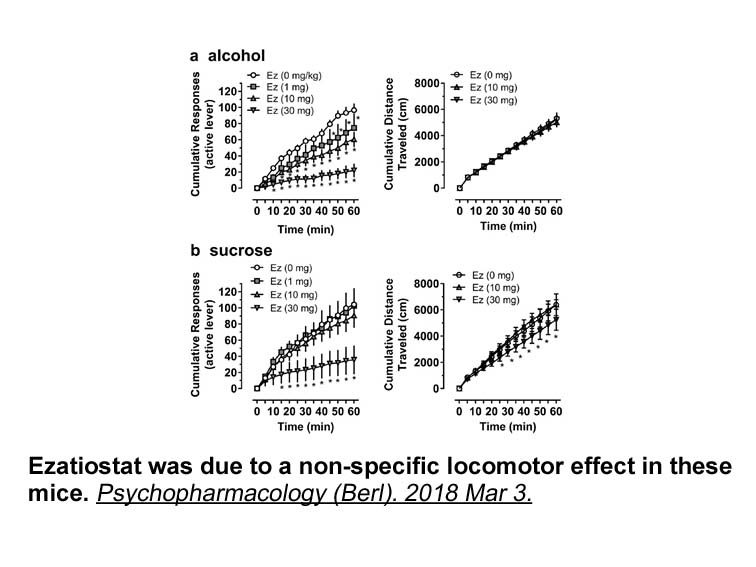Archives
The first purpose of the
The first purpose of the current study was to characterize a standardized experimental model of postprandial hyperlipidemia in various rodent species. To our knowledge this study provides the most comprehensive and systematic evaluation of rodent models of postprandial hyperlipidemia to date. We adapted a technique described by Farese and colleagues in mice (Buhman et al., 2002) and applied it broadly to numerous rodent species. This model mimics the oral triglyceride tolerance test used clinically to evaluate postprandial responses in humans. In the current study, intragastric administration of a standardized volume of corn oil increased serum triglycerides in all rodents evaluated; however, the magnitude and time-course of the postprandial triglyceride excursion varied to some extent across the different species and strains.
In normolipidemic CD-1 and C57BL/6 mice, the maximal increase in serum triglycerides was observed two h after corn oil administration with triglycerides returning towards baseline levels within three h. However, in dyslipidemic ob/ob and apoE−/− mice, serum triglycerides were incrementally increased at the 3h time-point. This may reflect impaired triglyceride clearance in these models of dyslipidemia. Zsigmond reported that apoE−/− mice had reduced levels of lipoprotein lipase activity and were resistant to heparin induced triglyceride hydrolysis in vivo (Zsigmond et al., 1998). Ob/ob mice are a model of insulin resistance, and impaired triglyceride catabolism and clearance is a well recognized feature of this pathophysiologic condition (Duez et al., 2008). Delayed clearance of intestinally derived lipoproteins has been documented in insulin resistant states; likely the result of M 1145 with VLDL for removal pathways (Brunzell et al., 1973), and reductions in lipoprotein lipase activity (Haffner et al., 1984).
Serum triglycerides significantly increased in response to corn oil administration in Sprague–Dawley rats, although the magnitude of the response was relatively modest. In contrast, the JCR/LA-cp rat demonstrated both fasting hypertriglyceridemia and an exaggerated postprandial triglyceride response. Previous measurements of serum triglycerides and apolipoprotein B-48 concentration after an oral fat load in the JCR/LA-cp rat, have also revealed this animal to have an amplified postprandial response (Mangat et al., 2007, Vine et al., 2007). Consequently the JCR/LA-cp rat has been advocated as a model system to study perturbations in postprandial lipid metabolism (Vine et al., 2007). The results of our study support that conclusion.
In the normolipidemic and hyperlipidemic hamster, serum triglycerides increased only modestly in response to corn oil. The small and variable postprandial response in the insulin-resistant hyperlipidemic hamster was somewhat surprising. An extensive body of literature documents both fasting and postprandial overproduction of intestinally derived lipoproteins in the fructose-fed hyperlipidemic hamster (Adeli and Lewis, 2008, Haidari et al., 2002, Hsieh et al., 2008). The Adeli laboratory elegantly demonstrated a two to four-fold elevation  in intestinal apolipoprotein B-48 containing particle overproduction in the hyperlipidemic hamster in vivo (Haidari et al., 2002, Lewis et al., 2005). These findings were further advanced ex vivo in primary cultured enterocytes from hyperlipidemic hamsters where enhanced enterocyte de novo lipogenesis, increased apolipoprotein B-48 stability and upregulation of microsomal triglyceride transfer protein mass and activity were all observed (Haidari et al., 2002). These investigators concluded that intestinal overproduction of triglyceride-rich lipoproteins is a major contributor to the fasting and postprandial dyslipidemia observed in the insulin-resistant hyperlipidemic hamster model (Haidari et al., 2002). Combined, these findings directed us to hypothesize that the postprandial triglyceride excursion in response to an oral lipid challenge would be substantially amplified in the hyperlipidemic hamster. Our study failed to identify an enhanced postprandial response in the hyperlipidemic hamster. The foundation for this apparent discrepancy is currently unclear. Nonetheless, we terminated further investigation of the hamster as a model of the human oral triglyceride tolerance test.
in intestinal apolipoprotein B-48 containing particle overproduction in the hyperlipidemic hamster in vivo (Haidari et al., 2002, Lewis et al., 2005). These findings were further advanced ex vivo in primary cultured enterocytes from hyperlipidemic hamsters where enhanced enterocyte de novo lipogenesis, increased apolipoprotein B-48 stability and upregulation of microsomal triglyceride transfer protein mass and activity were all observed (Haidari et al., 2002). These investigators concluded that intestinal overproduction of triglyceride-rich lipoproteins is a major contributor to the fasting and postprandial dyslipidemia observed in the insulin-resistant hyperlipidemic hamster model (Haidari et al., 2002). Combined, these findings directed us to hypothesize that the postprandial triglyceride excursion in response to an oral lipid challenge would be substantially amplified in the hyperlipidemic hamster. Our study failed to identify an enhanced postprandial response in the hyperlipidemic hamster. The foundation for this apparent discrepancy is currently unclear. Nonetheless, we terminated further investigation of the hamster as a model of the human oral triglyceride tolerance test.